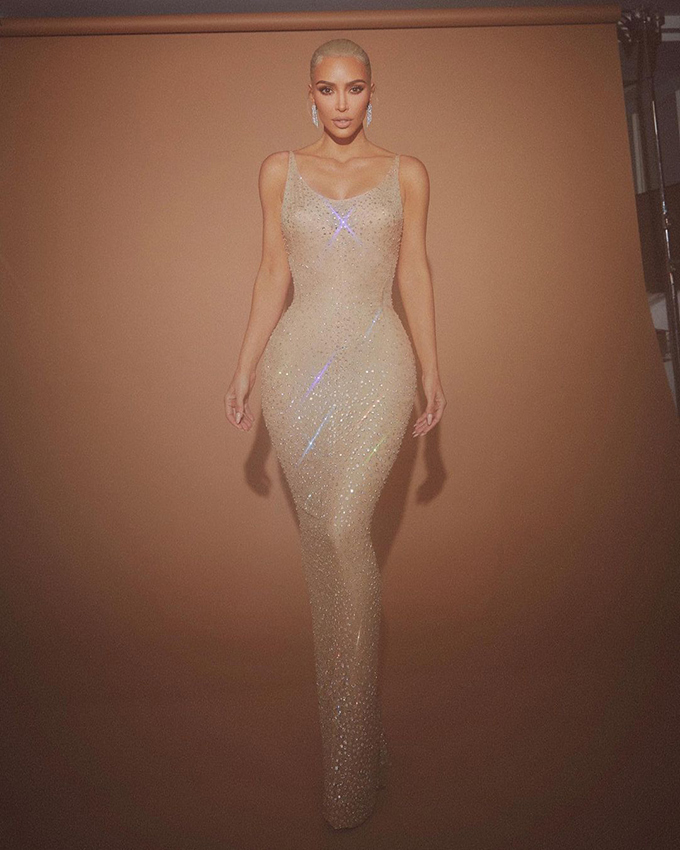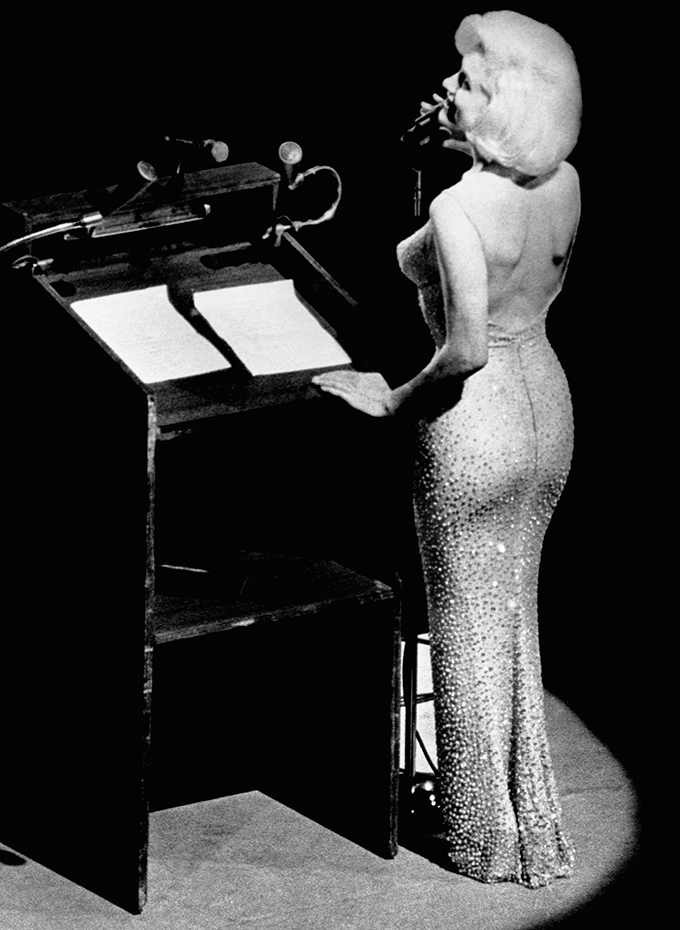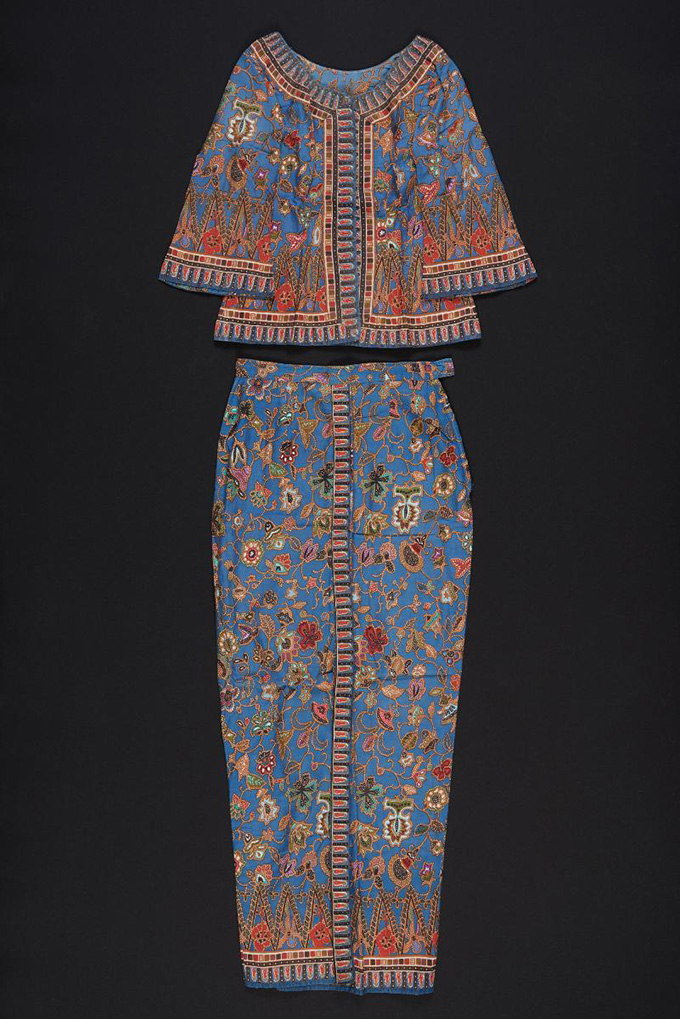Earlier this year, stars gathered in downtown Manhattan to attend the Met Gala. And once again, the world fawned over celebrities as fashion’s biggest night set the stage for the year’s most memorable red carpet moments. Taking on the theme of ‘Gilded Glamour’, we saw an assembly of A-listers dressed to the nines in lengthy trains and giant jewels, putting a modern twist on an era of American prosperity and industrialisation.
This year in particular, a certain dress made waves in international news and the textile conservation community. The great Marilyn dress, as worn by Kim Kardashian, brought up important conversations surrounding the state of garment preservation and fashion history.

Conserving the past
“Conserving fashion is important as it’s a way to continue generational conversations on our history. It’s easy for each generation to think that what they’re doing is completely new, but looking into the past can give us a bigger perspective, inspiration and even hope,” says Daniela Monasterios, fashion lecturer, researcher and curator based in Singapore. “Garment preservation is an uphill battle to what naturally happens to objects—decay and disintegration.”
The process of conservation is highly specialised, requiring consistent climate control to prevent damage from humidity, bugs and heat. What’s more, each garment requires careful assessment to be treated specifically by experienced conservators. According to Monasterios, “the current school of thought is that little intervention should be done to the objects, such as adding new paints or adhesives, but instead focus on avoiding further damage.”
The dress in question
Arguably one of the most iconic dresses in the world, Marilyn Monroe wore the famed sheer dress custom-made by French designer Jean Louis, based on a sketch by American costumier Bob Mackie. The form-fitting evening gown, encrusted with 2,500 hand stitched crystals, was adorned by the media darling during President John F. Kennedy’s birthday gala. It quickly became a signifier of a tumultuous and divisive decade in American and world history.

Though the famed dress was worn for only a mere matter of minutes on the red carpet before Kardashian changed into an exact replica, allegations of the dress being returned in worse condition only seemed to add fuel to the fire. Loose stitchings, ripped seams and missing crystals were among the accusations thrown at her and the current owner of the dress, Ripley’s Believe It or Not!. Amidst all the controversy, both parties have explicitly denied the allegations—but photographs comparing the dress pre-and-post Met Gala have shown wear and tear.
View this post on Instagram
“The dress was made with a fabric that’s no longer manufactured, and it was literally sewn onto the body of Marilyn Monroe—it has traces of her DNA on it. To me, objects and the traces of their wearers are part of their magic and provenance. Kim Kardashian undoubtedly diluted this provenance and did damage to the dress,” Monasterios expresses.
At the end of the day, the entire fiasco has dug up a forgotten part of fashion. Having no concrete conclusion drawn to the fiery debate surrounding Kardashian and the dress, this incident has undeniably sparked a much-needed discussion about significant pieces of garments throughout sartorial history.
Fashion symbols of Singapore
We’ve seen the Singaporean fashion scene flourish over the years, with local designers paving the way in forging unexplored themes in fashion unique to our little red dot. But looking at the past before the time of young rising talents and boundary-breaking creatives, the question stands—is there a Singaporean equivalent of the Marilyn Monroe dress?
“I think in Marilyn Monroe’s dress there is an idea of a ‘true blue’ American icon—she was an icon of a specific point in time and stood for a type of beauty, sexuality and glamour that has become an American archetype,” explains Monasterios. “Following that national rhetoric, I think an equivalent would be the first prototypes of the Singapore Girl costume.”

The enduring symbol of the Singapore Girl—SIA’s sarong kebaya was designed by haute couture designer Pierre Balmain in 1968. Throughout our nation’s developmental years, the sarong kebaya has lived on to be a significant reminder of our humble beginnings and rise to international recognition as a city even to this day.
While SIA’s batik motifs veer in the direction of traditional ethnic dressing, we can also turn to famous local figures from the past who parallel Marilyn’s impact on pop culture. Thinking back to the golden age of Malayan cinema back in the 1960’s, one individual stands out as a legend to be remembered—Saloma. Born in Singapore in 1922, Saloma started singing at the age of seven and by the time she reached her teens, she was working as a professional vocalist at nightclubs and weddings. After transitioning to acting in the ’50s, the multi-talented hyphenate quickly attained celebrity status as she starred in cult classic films Ahmad Albab and Seniman Bujang Lapok alongside her husband and entertainment icon P. Ramlee.

Her figure hugging peplum kebaya tops and skirts were a staple in her wardrobe throughout her career—and she dressed in styles years ahead of her time, which helped to cement her status as a trendsetter. Long before the existence of personal stylists, Saloma took on the task of altering and embellishing her own costumes which often leaned towards traditional Malayan dress infused with Western twists. “Saloma was called the Marilyn Monroe of the East by Marlon Brando,” Monasterios adds.
Musing on Singapore’s rich heritage, it’s hard to pin everything down to just one piece of clothing to encapsulate our island’s melting pot of diverse cultures. In an age where fashion cycles come and go in a mere matter of weeks, the everlasting icons of the Singapore Girl and Saloma may just give us clues into how garments have shaped the lives of our ancestors and the development of our nation from a humble fishing village to a global innovation hub.





